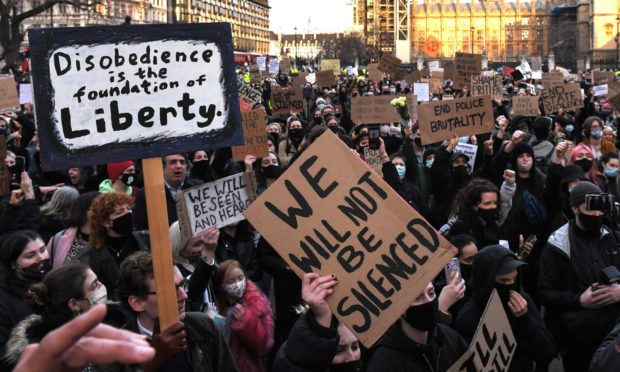I am not a woman who is often lost for words, but through the past week or so I have been struggling.
As the stories of violence against women, including sexual harassment on the streets, have been increasing, I have been experiencing a turbulence of emotions. I am angry and upset, depressed and disappointed, fearful and hypervigilant, all at the same time. Violence against women is a priority issue of concern for me – my No 1. It is the problem I speak about more than any other.
More than a week ago, we celebrated International Women’s Day. This is an opportunity to rejoice in the huge potential of women in the world, to rejoice in the diversity of gifts and experiences women bring to our shared life in society. This year’s celebration was followed swiftly by the publication of reports describing the experiences of many women with respect to the threats and violence that are part of everyday experience for many. When I read the YouGov report that in the UK 97% of young women aged between 18-25 had experienced sexual harassment in public places, my blood began to boil.
Then, sadly, the body of Sarah Everard was found, with the outpouring of grief and upset following her death that has been so visible through the last few days. Alongside this has been the annual reminder of how many women are killed, not by a stranger but by men they know well and often share a home with. I do not know a woman who has not been deeply troubled by all of this.
For me, it was the sight of women gathering together to “reclaim the streets” that touched a deep memory within me. This public display of anger and upset resonated with one of the key formational events in my life. I was reminded of the “reclaim the night” protests in West Yorkshire in the late 1970s.
I was born and brought up in West Yorkshire. Many readers will remember the murders that took place there between 1975 and 1980. Thirteen women were murdered (with seven other attempted murders) by Peter Sutcliffe, the so-called Yorkshire Ripper. I was 18 years old when the murders began. All of the murders and attacks were upsetting, but the one I remember most clearly was that of Barbara Leach. Barbara was a student in Bradford, a couple of years younger than me. She was murdered just a few minutes from where I lived. Before her murder, women were taking care when out at night, but after this murder, women were firmly instructed to remain indoors, or if going out, to only do so if accompanied by a man.
I remember the visceral fear of those times. Early one evening in September 1979, I remember standing outside our house, in the street, and looking down the road in the direction of the place where Barbara had been murdered and her body found. I was just yards from our front door, but I remember thinking: “Am I safe here?” The night was beginning to draw in, when should I go into the house and lock the door? I remember all this as if it were yesterday.
What followed were marches and protests. Woman wrote and carried placards, and raised their voices. It was not right that women should be made to feel so fearful, it was not right that we would have to modify our behaviour. It felt as though women had to take and bear all the responsibility for our own safety, while the young and older men in society did not have to adjust how they behaved at all.
We were told this was going to be a turning point. After these murders, and after the protests from so many women demanding safety on the streets, nothing would be the same again. Things would change. This was not the case, nothing changed, and in many ways things are worse now than they were in the late 1970s. Forty years on and women are protesting the same issues. The difference is that now we are better informed, we know the research numbers. We know about the low incidence of prosecutions for rape, of escalating domestic violence, of the ubiquity of sexual harassment of women by men on the streets.
Whatever happens next it cannot include telling women things will be better without making some significant changes. Changing the law and making misogyny a hate crime would be a start, making sexual harassment outdoors illegal a good follow on. We have no patience left for waiting. Actions are needed now.
The Rt Rev Anne Dyer is Episcopalian Bishop of Aberdeen and Orkney and Scotland’s first female bishop










